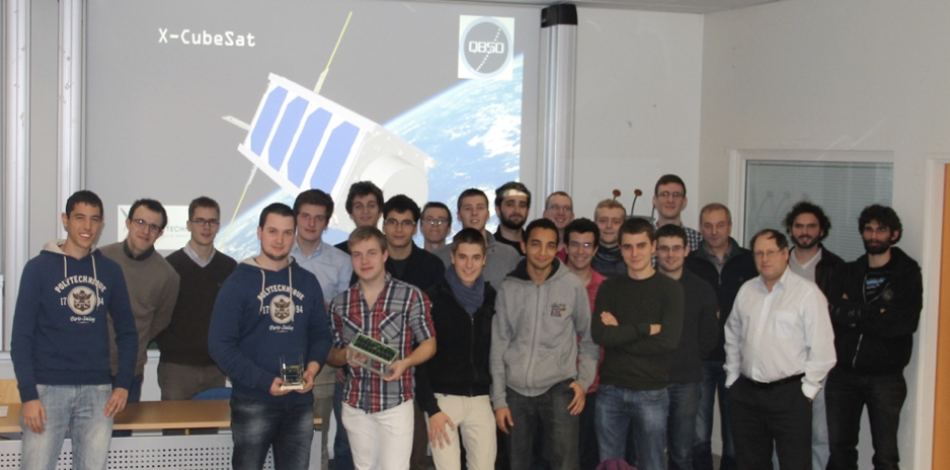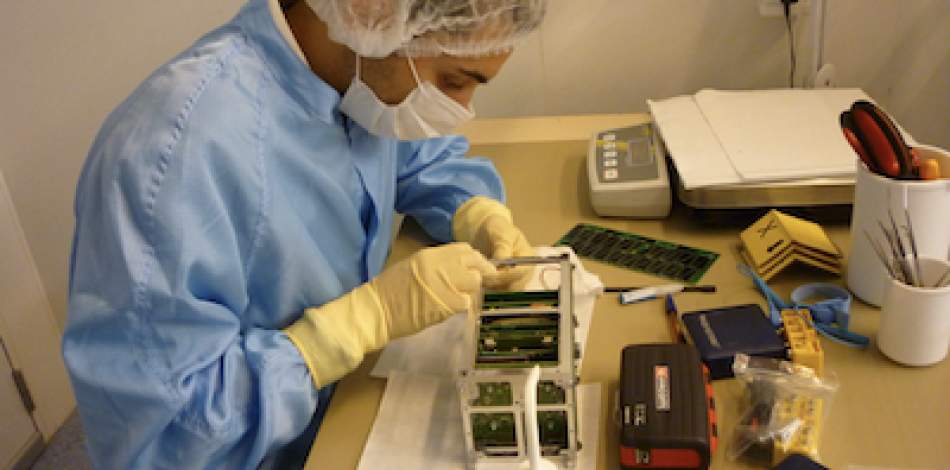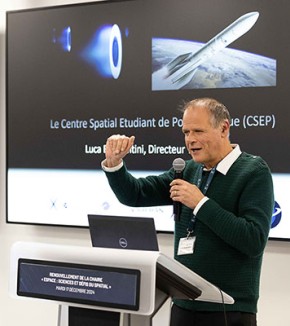X-CubeSat

XCubeSat is a nano-satellite developed in the framework of the international QB50 project led by the Belgian Von Karman Institute for Fluid Dynamics. The nano-satellite is equipped with the FIPEX instrument (phi - Probe - Experiment, developed by the University of Dresde) which measures the oxygen density over the lifetime of satellites in low earth orbit.
Together with SpaceCube (Mines ParisTech), it is the one of the first 2 French double-CubeSats (10 x10x 22.7 cm) put into orbit from the International Space Station.
| Partenaires | École polytechnique et École des Mines ParisTech |
| Launch | April 18th towards the ISS from Cap Canaveral |
| Injection into orbit | Mai 17th and 18th 2017 from the ISS |
| Initial orbit | 400 km |
| Duration of the mission | Atmospheric reentry on February the 4th, 2019 (March 2019 for spaceCube) |
The 2 flight models, after passing environmental tests (vibration and thermal vacuum at the PIT of the University of Versailles Saint Quentin) were delivered to ISIS (Holland) in September 2016 for final testing and integration into their Nanoracks deployment device.
XCubeSat transmitted telemetry from orbit. Then after about 1 year and 9 months of operation in orbit, XCubeSat re-entered the atmosphere on February 4th, 2019. SpaceCube transmitted the UHF telemetry signal, but little data was analyzed due to a noisy radio frequency signal. Spacecube re-entered the atmosphere in early March 2019.
 Support l'X
Support l'X 










